TSC Issues Training Module for Staff on COVID-19 Guidelines and Health Protocols
This training module provides guidelines and protocols to guide the Institutional Heads, Teachers/Tutors/Instructors and Support Staff in facilitating effective Re-opening of the Institutions and ensure continuous learning. All teaching and non-teaching staff should be conversant with facts concerning COVID- 19 Pandemic.
FOREWARD
The Government of Kenya is committed to the provision of quality and equitable education and training to its citizens. Article 43 (1) (f) of the Constitution of Kenya (2010), provides the right to education for all persons. The right to health is a fundamental human right guaranteed in the Constitution of Kenya. Article 43 (1) (a) Safety of the learner is therefore central to the provision of quality education in any country. While this is true for learners at all levels of education, it is particularly critical for learners at the basic education level in view of their relatively tender ages.
In view of the above, the Government closed all learning institutions from 15th March 2020 to curb the spread of the virus and ensure that the learners were safe from the novel CoronaVirus.
The pandemic disrupted learning for over 18 million learners and trainees in Kenya posing a threat to the attainment of Sustainable Development Goal No.4 on access to quality, equitable and inclusive education and training.
At the moments, nation’s world over are planning for re-opening of educational institutions in order to ensure continued learning. The Government of Kenya has put in place interventions to ensure that learning continues for all Kenyans despite the interruptions occasioned by the COVID19 pandemic. To address the COVID- 19 Pandemic challenge, the Ministry of Education has developed a COVID -19 response and recovery plan whose aim is to guide on modalities of provision of accessible quality, equitable and inclusive education and training for all Kenyans during and after the pandemic. It also aims at facilitating production of online teaching and learning materials and to expand existing remote learning programmes, to ensure access to learning opportunities provided. These efforts will result in providing a platform for promoting health and safety as well as advocates for disease prevention and control at home, in school and the larger community.
This document provides guidelines and protocols to guide the Institutional Heads, Teachers/Tutors/Instructors and Support Staff in facilitating effective Re-opening of the Institutions and ensure continued learning. All teaching and non-teaching staff should be conversant with facts concerning COVID- 19 Pandemic.
All institutional staff will be required to ensure full compliance and implementation of the guidelines and health measures.

State Department of Early Learning and Basic Education
PREFACE
The COVID19 Pandemic has presented unprecedented circumstances in the learning environment making it challenging to offer instructions in the traditional manner. These abnormal situations that we in the education sector have found ourselves in call for innovative approach to curriculum delivery in the basic educational institutions.
It is in this respect and in order to build teachers’ resilience and ensure effectiveness implementation of the curriculum in safe environment that protect learners and teachers from COVID19 infection that the education sector has developed a module for staff in learning institutions. The module content takes cognizance of the fact that heads and teachers of basic education learning institution manage and interact with learners and non-teaching staff. The module focuses on: COVID19 health and safety protocols; hygiene and sanitation guidelines for basic education institutions. In addition, the module emphasis on the well-being of the institutional human resource in regard to psycho-social support and guidance and counseling services.
Further, teachers will be exposed to use of alternative mode of curriculum delivery and enhanced use of technology in learning. Roles of staff in the institutions are also clarified with a view to promoting safe school reopening during COVIVD19 period and beyond.
This module will enable the Heads of Institutions, teachers and non- teaching staff to:
-
Implement guidelines on health and hygiene measures to be put in place before opening, during opening and after re-opening of learning institutions;
-
Demonstrate clear understanding of facts about COVID- 19 in and out of institution;
-
Facilitate provision of mental and psycho-social support to learner/trainees, teachers and the support staff during this period of COVID-19 containment;
-
Demonstrate ability to facilitate continued Learning/Training during COVID-19 pandemic and beyond;
-
Collate and manage data on COVID 19 in the learning institutions.
As I commend the developers of this module as it contains well researched information I wish to mention that readers are expect to gather new information on COVID19 as Ministry of Health and global scientist are availing new finding and knowledge on the disease from time to time.
The module will not only facilitate staff in their day to day operations during the COVID19 Pandemic period but will also be a useful reference in defining the roles of each levels of staff in the learning institutions.
Dr. Nancy Njeri Macharia
Commission Secretary/Chief Executive
 Teachers Service Commission
Teachers Service Commission
ACKNOWLEDGEMENT
The development of this training module has been as a result of concerted effort within the education sector. I take this opportunity to appreciate the participation of all directorates and agencies of the Ministry in ensuring the training module is developed.
I wish to appreciate the Cabinet Secretary, Prof. George A. O. Magoha, CBS; the Chief Administrative Secretary Ms. Mumina Gallo Bonaya and
Zack Kinuthia together with Principal Secretary Dr. Belio R. Kipsang, for the guidance in the development of this training module.
I also appreciate the CEOs TSC, SAGAs and other MDAs, all Directors in the ministry and their staff for their contribution on the content and inputs in various stages
Further I would like to commend the efforts of the training sub-committee technical working group for spearheading the development of this module. Finally I wish to appreciate all the actors for their inputs during the development of COVID -19 response and recovery plan whose aim is to guide on modalities of provision of accessible quality, equitable and inclusive education and training for all Kenyans during and after the pandemic..
Special thanks go to the training sub technical committee that coordinated the teacher and non – teaching staff module development process. This includes the following members;
-
Paul Kibet MOE
-
Dr. Silvester Mulambe MOE
-
Francis Karanja MoE
-
Gabriel Mathenge TSC
5. Anne Gachoya |
MOE |
6. Aileen Ntinyari |
TSC |
7. Edith Wekesa |
MOE |
8. Simon Mururi |
MOE |
9. Esther Karema |
MOE |
10. Salome Wenya |
MOE |
11.
Lilian Birech MOE
 Elyas Abdi, OGW
Elyas Abdi, OGW
Director General State Department of Early Learning and Basic Education
Click Here to Download this Document in PDF: Training Module for Staff of learning institutions on COVID-19 guidelines and Health Protocols
Table Contents
SESSION ONE: STAFF IN LEARNING INSTITUTIONS
1.4 USE OF THE TRAINING MODULE
SESSION TWO: UNDERSTANDING FACTS ABOUT CORONAVIRUS DISEASE
What are the signs and symptoms of COVID- 19?
How the spread of COVID-19 can be slowed down or prevented
How to prevent self and others from Contracting COVID-19
Explain to the participants the steps in Handwashing
Information on where to get accurate and reliable information about COVID-19
What to do when a learner or staff member becomes ill
SESSION THREE: HEALTH AND SAFETY PROTOCOLS FOR BASIC EDUCATIONAL INSTITUTIONS
SESSION FOUR: HYGIENE AND SANITATION
SESSION FIVE: HEALTH SAFETY AND WELL BEING OF INSTITUTIONAL STAFF
5.5 PSYCHOLOGICAL IMPACTS OF COVID-19
5.6 COUNSELLING IN THE CONTEXT OF COVID 19
SESSION SIX: ALTERNATIVE MODE OF CURRICULUM DELIVERY
6.4 ALTERNATIVE MODES OF CURRICULUM DELIVERY
6.5 TECHNOLOGIES AND APPLICATION
6.6. ONLINE SAFETY, SECURITY AND ETHICS
6.7 USE OF TECHNOLOGY IN CURRICULUM DELIVERY
ROLES OF DIFFERENT STAFF IN LEARNING INSTITUTION
ABBREVIATIONS AND ACRONYMS
ACE Adult and Continuing Education
BOM Board of Management
CD-ROM Compact Disk-Read Only Memory
COVID-19 Corona Virus Diseases
of 2019
LMS Learning Management System
MOE Ministry of Education
MOH Ministry of Health
MOOC Massive Open Online Courses
OER Open Educational Resources
PAs Parents Association
PHEIC Public Health Emergency of International Concern
SNE Special Needs Education
TOTs Trainer of Trainers
TSC Teachers Service Commission
TTCs Teachers’ Training Colleges
SESSION ONE: STAFF IN LEARNING INSTITUTIONS
1.0 INTRODUCTION
Training of educators on COVID-19 guidelines and health protocols enables them to serve as advocates and resources that would increase awareness and provide guidance to mitigate COVID19 pandemic. This will enhance promotion and safeguarding of every child’s right to education, health and safety as set out in the Convention on the Rights of the Child and Article 53 (2) of the Kenya Constitution (2010).
The module has 5 sections which will guide the training of Heads of Institutions Teachers/Tutors/Instructors and Support Staff
to prevent the potential spread of COVID-19 in educational institution settings; stigmatizing learners/trainees and staff that may have been exposed to the virus. Education settings should continue to be welcoming, respectful, inclusive, and supportive to all.
1.1 OBJECTIVES
By the end of the training, the Heads of Institutions, Teachers/Tutors/Instructors and Support Staff will be able to:
-
Implement guidelines on health and hygiene measures to be put in place before opening, during opening and after re-opening of learning institutions;
-
Demonstrate clear understanding of facts about COVID- 19 in and out of institution;
-
Facilitate provision of mental and psycho-social support to learner/trainees, teachers and the support staff during this period of COVID-19 containment;
-
Demonstrate ability to facilitate continued Learning/Training during COVID-19 pandemic and beyond;
-
Collate and manage data on COVID 19 in the learning institutions.
1.2 RESOURCES
During the training, you can use a combination of resources listed below. Your creativity and innovativeness will contribute to demystifying the concepts and hence make learning more real:
Handout on hygiene protocols, Child friendly institutions Manual, Sector policy for learner and trainees with disabilities, Audio visual aids, Newspaper cuttings, List of messages, Fliers, Posters, Pictures, Flip Charts, Resource person and Digital devices among others
1.3 METHODOLOGY
The following methods can be blended during the training;
Demonstration, Lecture, Discussion, Question and Answer, Project, Inquiry Based Learning and Practical Activities among others
1.4 USE OF THE TRAINING MODULE
Besides the target users, any other person can make use of the module. Users of the module are expected to adapt the content to cater for persons with disabilities. The module has different sections that highlight on; understanding COVID-19, Health, Hygiene, Nutrition and Sanitation, Safety Protocols, Health and Safety Measures, and Alternative Modes of Curriculum Delivery. The module highlights the different roles of the stakeholders; Basic education Institutional Heads, Teachers/Tutors/Instructors and Support Staff. It further expounds on the suggested Alternative Learning/Training modes/methods. There are also key messages/quotes on relevant concepts. Institutions are expected to identify the nearest working partners for networking and benchmarking. The institution heads will be required to work closely with the nearest Health facilities and Ambulance providers. The document will be used alongside with COVID-19 guidelines and protocols.
1.5 SCOPE OF APPLICATION
This Training Module aims at empowering Heads of Institution, Teachers/Tutors/Instructors and Support Staff
in all learning institutions of Basic Education including Special Needs Education (SNE), Non formal Centers, Adult and Continuing Education (ACE) on COVID-19 Pandemic. The target users are Pre-Primary, Primary, Secondary institutions and Teacher Training Institution Principals, Head-Teachers, Deputies, Heads of Departments, Senior Teachers, Teachers/Tutors/Lecturers and the Support staff. This will apply to all institutions both private and public.
1.6 CONCLUSION
The training module intends to highlight on how the Institutional Heads,
Teachers/Tutors/Instructors and Support Staff
will actualize the Re-opening of the Institutions and ensure continued learning. All teaching and non-teaching staff should be conversant with facts concerning COVID- 19 Pandemic.
SESSION TWO: UNDERSTANDING FACTS ABOUT CORONAVIRUS DISEASE
2.0 INTRODUCTION
On 30 January 2020, the World Health Organization declared the outbreak of the 2019 Novel Coronavirus Disease (2019-nCoV or COVID-19) a Public Health Emergency of International Concern (PHEIC). Kenya confirmed its first case of COVID-19 on 13th March, 2020 with initial cases reported in the Capital City of Nairobi and also in the Coastal area of Mombasa County. The cases have since continued to rise and have spread across the country.
2.1 SESSION OBJECTIVES
By the end of the session, the participant should be able to:
-
Explain the meaning of the term ‘COVID-19’
-
State signs and symptoms of COVID-19
-
Explain how COVID-19 is spread iv. Explain how to prevent COVID-19
v. Demystify myths about COVID-19
2.3 SUGGESTED RESOURCES
Handout on hygiene protocols, Child friendly Schools Manual, Audio visual aids, Newspaper cuttings, List of messages, Fliers, Posters, Pictures, Flip Charts, Resource person and Digital devices among others in an inclusive setting
2.4 METHODOLOGY
Demonstration, Lecture, Discussion, Question and Answer, Project, Inquiry Based Learning and
Practical Activities among others
What is COVID-19?
Activity 1:
Introduce the activity and try to establish what participants know about COVID-19. Allow participants to brainstorm on the meaning of COVID-19. Remind participants that in a brainstorming session all responses are acceptable but not necessarily discussed. The brainstorming allows for immediate responses to the given question, “What is COVID-19?” Facilitators’ Notes
The Coronavirus Disease (COVID-19) is a disease caused by a new strain of coronavirus which is a family of viruses that infect both humans and animals. The human coronavirus can cause mild disease similar to a common cold, while others cause more severe diseases such as – Middle East Respiratory Syndrome (MERS) and Severe Acute Respiratory Syndrome (SARS) and some types of common cold. While the initial transmission appeared to be zoonotic, person to person transmission is the most common mode of transmission. Human coronaviruses are commonly spread through droplets (coughing) and close personal unprotected contact with an infected person (touching, shaking hands).
What are the signs and symptoms of COVID- 19?
Activity 2:
Conduct a discussion on the signs and symptoms of COVID-19
Engage learners by asking them to answer the following questions
Display a video clip/ picture showing COVID-19 symptoms if possible
- Why do we need to know the signs and symptoms of COVID-19?
- What are the signs and symptoms?
- Give examples of each.
Record all the responses on a flip chart/board or note book
Explain to the participants what are signs and symptoms of COVID-19?
Facilitators’ Notes
The signs and symptoms are typically respiratory symptoms and include:
-
Fever of above 37.5 °C
-
Dry cough
-
Shortness of breath or difficulty in breathing
-
Muscle pain
-
Body ache and headache
-
Sore throat
-
Loss of taste or smell
-
Other cold like symptoms
Emphasize to the participants the following facts:
-
Incubation period of COVID-19 is between 2 and 14 days and this is the time between when a person gets infected and when they start showing symptoms.
-
If a person remains well 14 days after contact with someone with confirmed COVID-19, it is unlikely that they have been infected.
-
Institutions were seen as high risk centers with potential of exposing both learners and teachers to opportunities of spreading the virus.
-
Learners and teachers with disabilities who require extra support face an increased risk of contracting Coronavirus as they are in close contact with third parties to a larger extent in comparison to their peers without disabilities.
-
COVID-19 signs and symptoms are similar to the flu (influenza) or the common cold, which are a lot more common than COVID-19.
-
Emphasize to the participants that testing is required to confirm if someone has COVID-19 if they experience the stated signs and symptoms.
How is COVID-19 spread?
Activity 3:
● |
Ask the participants to form small groups and discuss how COVID -19 is spread. |
● |
Use of interactive and experiential learning approaches that enhance the learners’ ability to internalize the skills and values |
● |
Allow 10 minutes for this activity |
● |
Summarize the responses from participants |
● |
Foster positive behavior change to prevent the spread of COVID -19 |
● |
Create awareness among learners on how COVID-19 can spread |
●
|
Demystify the myth that COVID -19 is for certain race or category of people |
Facilitators’ notes
The virus that causes COVID-19 is mainly transmitted through direct contact with respiratory droplets of an infected person. It is generally spread from person to person through small droplets from the nose or mouth which are released when an infected person coughs, sneezes, shouts or talks. These droplets land on objects and surfaces around the infected person. People can get infected with COVID-19 if they breathe in droplets from the infected person or by touching the contaminated objects or surfaces, then touching their face (eyes, nose, or mouth). The risk increases with the length of time someone has close contact with an infected person. It is worth noting COVID -19 is spread by people who have been exposed to the virus and people do not get sick with COVID-19 based on their nationality or any other characteristics.
How the spread of COVID-19 can be slowed down or prevented
Activity 4:
● |
Ask learners in groups of two to list down 3 ways to prevent COVID-19 |
● |
Ask 3 learners to demonstrate how people should cough |
Facilitators’ notes
Inform participants that COVID-19 is a respiratory infection like the flu or the common cold. It’s critical to comply with the public health preventive measures in order to curb the spread.
Suggest to participants some of the public health measures which include:
-
Staying home when unwell
-
Covering mouth and nose with flexed elbow or tissue when coughing or sneezing
-
Proper disposal of soiled tissues immediately after use.
-
Thoroughly washing hands regularly using clean running water and liquid soap
-
Using an alcohol-based hand sanitizer to clean hands where safe running water and liquid soap is not available
-
Daily cleaning and disinfecting frequently touched surfaces and objects (railings, walls, desks, door and window handles, teaching, learning and training materials) at least once a day (as a minimum requirement)
-
Daily screening for symptoms of COVID-19
-
Avoiding close contact with people who are unwell
Give a quiz to participants to list the basic ways of preventing COVID-19
Emphasize to the participants the general rules to prevent the spread of the coronavirus disease as follows:
-
Social distancing oneself from other people ●
Hand Washing/ sanitizing -
Practicing good hygiene measures
-
Using face masks
Who is most at risk?
Activity 5:
Allow five minutes for participants to brainstorm on whom they think are at risk.
Facilitator’s notes
Explain to the participants the following:
-
That this is a new coronavirus that has not been previously identified in humans and not much is known about it.
-
People of any age can be infected with the virus.
-
People with weak immune systems, older people, and those with chronic medical conditions such as diabetes, cancer, heart disease and chronic lung diseases appear to be more at risk of developing severe symptoms
-
People living with or working closely with a person who is ill with COVID-19 are at highest risk of getting infected.
▪
That after a person has been infected; it may take 2 to 14 days until they develop any symptoms.▪
That educational setting may enable the spread of COVID-19 by providing confined spaces where large number of people such as learners and staff are in close, regular contact with each other.▪
That educational institution however can help reduce the spread of COVID-19 by complying with the Public Health protocols.
Underscore that there is no currently specific treatment or vaccine for COVID-19 but many of the symptoms can be treated and accessing early care from a healthcare provider can make the disease less dangerous. Remind each participant to take the containment measures to mitigate the spread of COVID-19.
How to prevent self and others from Contracting COVID-19
Activity 6:
Explain to the participants that the best way to prevent infection and spread of COVID-19 is to avoid being exposed to the virus by following basic hand and respiratory hygiene measures.
Ask participants to discuss the basic hand and respiratory hygiene measures
Graphical designers to provide relevant illustration on how to wash hands to prevent COVID-19
Facilitators’ notes
Explain to the participants that hand hygiene is a term used to cover both hand washing using soap and water, and cleaning hands with waterless or alcohol-based hand sanitizers .Inform them that regular hand washing with soap and water for at least 20 seconds should be done:
-
Before eating;
-
After sneezing, coughing, or nose blowing;
-
After using the restroom;
-
Before handling food;
-
![]() After touching or cleaning surfaces that may be contaminated; and ✔
After touching or cleaning surfaces that may be contaminated; and ✔
After using shared equipment like computer keyboards and mice. If soap and water are not available, use an alcohol-based hand sanitizer.
Guide learners not to use alcohol-based hand sanitizers unless when supervised by adults.
Explain to the participants the steps in Handwashing
Step 1: Wet hands with safe running water
Step 2: Apply enough soap to cover wet hands
Step 3: Scrub all surfaces of the hands – including backs of hands, between fingers and under nails – for at least 20 seconds
Step 4: Rinse thoroughly with clean running water
Step 5: Dry hands with a clean, dry cloth, single-use towel or air dry.
Explain to the participants that respiratory hygiene is infection prevention measures designed to limit the transmission of respiratory pathogens spread by droplet or airborne routes. Respiratory hygiene includes:
 ✔
✔Covering coughs and sneezes with tissues or the corner of elbow; and ✔
Disposing of soiled tissues immediately after use. ✔
Use of recommended re-usable face masks

Adapted from Minnesota Department of Health https://www.health.state.mn.us/people/cyc/hcpposter.html
Emphasize that educational institution managers must ensure learners and staff have access to clean running water and soap or sanitizers at all times while on the institution premises. For one to prevent self from contracting COVID-19, one needs usual household goods: soap, water, hand sanitizer, tissue and everyday cleaning detergents.
Information on where to get accurate and reliable information about COVID-19
Activity 7:
Ask participants what information they have heard about COVID-19 and from what source?
Facilitators’ Notes
Inform participants to be aware of fake information/ myths that may circulate about COVID-19
Not everything you read about COVID-19 in newspapers, online, social media or hear is accurate and verified. Trusted and accurate information on COVID-19 will be released by the Ministry of Health from time to time. Further, stay informed about COVID-19 through reputable sources such as: Ministry of Health Website, Ministry of Education Website, Teachers’ Service Commission Website, World Health Organization Website, and The Kenya Medical Research Institute (KEMRI) Website.
What to do when a learner or staff member becomes ill
Activity 8:
Ask institutional administrators to brainstorm on what they can do if a learner or a staff member becomes ill at institution.
Facilitators’ note
Explain to the participants what to do when a learner, or staff member develops any symptoms of illness consistent with COVID-19 (e.g., new onset or worsening cough OR shortness of breath OR at least two of the following symptoms: fever of 37.5 °C, chills, muscle ache, headache, sore throat, loss of taste or smell) in an institution or child care setting:
-
Isolate the person in the designated room while they wait to be picked up or after consultation with the Rapid Response Team. Ensure that they have hygiene supplies available, including a cloth mask, facial tissues, and alcohol-based hand rub.
-
If self, isolate yourself in a well ventilated room , do not attend classes or any other setting and seek medical attention immediately,
-
Notify local health officials, staff, and families immediately of any possible case of COVID-19 while maintaining confidentiality.
-
Remind staff members / caregivers monitoring the infected person to practice social distancing when possible.
-
Close off the space used for isolation after the ill person leaves. Open it after proper cleaning and disinfecting.
-
Clean and disinfect high-touch surfaces, focusing on areas where the person is known to have been and items they have touched (e.g., individual desk, bed, recently used toys, shared equipment).
-
Wear gloves when cleaning, and wash hands after removing gloves.
-
Inform anyone exposed to a person diagnosed with COVID-19 to stay at home and selfmonitor for symptoms, and to follow MOH guidance if symptoms develop.
Conclusion
Reflection
SESSION THREE: HEALTH AND SAFETY PROTOCOLS FOR BASIC EDUCATIONAL INSTITUTIONS
3.0 INTRODUCTION
The health, safety and wellbeing of learners, trainees, institution managers, principals, head teachers, teachers, tutors, lecturers, instructors and support staff is a priority in provision of quality education and training. This chapter will take you through health and safety protocols that must be implemented to curb the spread of COVID 19
.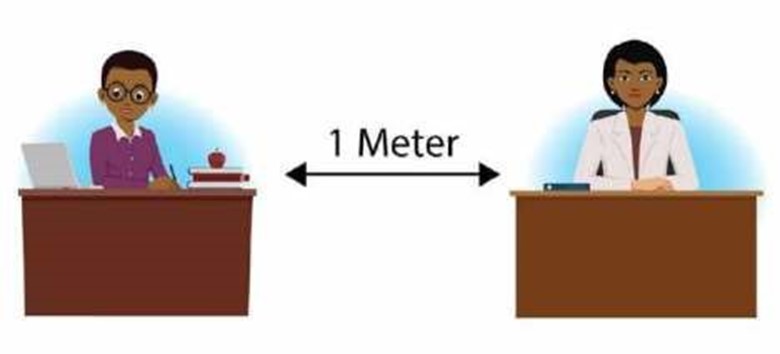
3.1. OBJECTIVES
By the end of this chapter the participants should be able to;
i. Apply social distance rule and guidelines ii. Demonstrate an understanding of health and safety protocols; iii. Appreciate COVID-19 health and safety protocols
3.2 SUGGESTED RESOURCES
Handout on hygiene protocols, Child friendly Schools Manual, Audio visual aids, Newspaper cuttings, List of messages, Fliers, Posters, Pictures, Flip Charts, Resource person and Digital devices among others in an inclusive setting
3.3 METHODOLOGY
The trainer may use any the following or blended methods during training;
Demonstration, Lecture, Discussion, Question and Answer, Project, Inquiry Based Learning, Practical Activities and group work among others
3.4 SOCIAL DISTANCING
Social distancing are measures put in place to restrict where and when people can gather in order to stop or slow the spread of infectious disease. In education settings, social distancing of at least 1 metre will be required to be maintained in the commonly shared areas.
Activity 1:
In pairs, discuss and report at the plenary how you can keep social distance while at dispensary, library, staffroom, playfield and administrative offices. Facilitator’s Notes
-
Social distancing is a deliberate increasing the physical space between people to avoid spreading COVID-19.
-
At all times and places, individuals should keep a distance of one meter to avoid contracting or infecting others with COVID-19.
-
Social distancing should be observed by all stakeholders in and out of school.
Activity 2:
● |
Individually outline how you can maintain social distances in the classroom, public transport and sanitation areas and share with others in a plenary. |
●
|
Identify some relevant activities that will lead to better understanding of social distancing |
Activity 3
In pairs, discuss how basic COVID-19 guidelines should be adhered to while using; ●
Boarding facilities
-
Sanitation facilities (Toilets/Latrines / Washrooms)
-
Library, Laboratories, preparation rooms workshop and other special rooms
-
Offices, Staff Rooms and open designated office space
-
Dining Hall and kitchen
-
Learner/Trainee Transport,
-
Co-Curricular Activities
-
Institution dispensary/Sanatorium/Sickbay
-
Institutional grounds/Play fields
Graphical designers to provide relevant illustration on how to wash hands to prevent COVID-19
Facilitator’s Notes
-
Ensure no congestion in the dormitories and always students keep a safe distance of one metre in the dormitories
-
Double decker beds should meet the condition of social distancing
-
Must have adequate toilets that are properly maintained
-
Staff working in the Sanitation areas must be equipped with basic PPE like gloves boots and masks
-
Institutional food handlers should have medical certificates.
-
Utensils and cutlery should be cleaned before use and should not be shared.
-
Should not share PPEs like lab coat, glasses, gloves and footwear in the laboratories
-
Hand washing facilities should be provided in the library
-
At all-time there should be social distancing, cleaning and disinfecting of commonly used equipment and surfaces.
-
Keep records of all learners using public transport.
3.5 CONCLUSION
-
Keep at least one-metre social distance at all times while in common places;
-
Avoid crowding at all times;
-
Ensure Supervised entry and exit
-
Social distancing can greatly help fight COVID-19
-
Display appropriate posters in strategic areas in the institutions.

3.6 REFLECTION
To what extent can I apply social distance rules and guidelines when performing my duties?
SESSION FOUR: HYGIENE AND SANITATION
4. 0 INTRODUCTION
In order to combat COVID-19, clear focus on issues of health, nutrition and sanitation demands for concerted effort of everyone in the institution and the community. Timely provision of adequate reliable water supply is crucial for hygiene and sanitation which will help in reduction and spread of Coronavirus disease 2019 in our institutions of learning.
4.1 SESSION OBJECTIVES
By the end of the session each participant should be able to:
-
Demonstrate proper hygiene and sanitation at all times in and out of institutions.
-
Practice proper collection, storage and transfer of waste in institutions
-
Demonstrate an understanding of how to correctly use non-contact thermometer and record temperature
-
Appreciate hygiene and sanitation protocols in and out of the institution
4.2 SUGGESTED RESOURCES
Handout on hygiene protocols, Child friendly Schools Manual, Audio visual aids, Newspaper cuttings, List of messages, Fliers, Posters, Pictures, Flip Charts, Resource person and Digital devices among others in an inclusive setting.
4.3 METHODOLOGY
One can apply any of the methods stated below during the training:
Lecture, Demonstration, Question and Answer, Discussion and Group work among others
4.4 HAND WASHING
Activity 1
In groups of 2- 5 discuss how to ensure that the available water is safely used by staff and learners to avoid contamination.
Activity 2:
In pairs brainstorm how image 1 complies with the sanitation protocols?

Image 1
Facilitator’s Notes
-
Reliable supply of water in all strategic places will serve the entire institution population.
-
Use standard taps and regularly clean
-
Where possible use taps with sensors to minimize hand conduct and reduce the risk of infection.
-
Where possible procure non-contact dispenser for sanitizers and soaps.
-
Train the institution community to use water without wasting or contaminating it.
Activity 2
-
In small groups of 3-5 members, discuss how to ensure that the available water is safely used by the entire institution community to avoid the spread of the virus
-
Discuss image 2 provided in relation to COVID-19 hygiene protocols
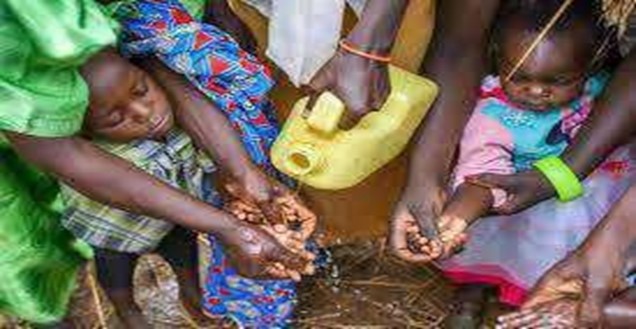
Image 2
Facilitator’s Notes
-
The institution community should access hand washing facility with adequate clean running water and liquid soap
-
Each and every person must Wash hands with water and liquid soap or sanitize before entering or leaving the classroom/lecture hall or any other facility in the institution
-
Washing hands for 20 seconds with clean water and soap keeps Coronavirus away.
-
Touching your ears, eyes, nose and mouth with your hands can infect you with COVID-19 ●
Wearing a face mask always protects you from contracting COVID-19 -
Cleaning and disinfecting surfaces frequently saves you from being infected by Coronavirus.
Image 3 : Adequate clean running water for washing hands

4.5 FOOD HYGIENE
Activity 3
In small groups, discuss how the institution management can implement hygiene and sanitation protocols in the institution.
Facilitator’s Notes
-
Daily clean and disinfect Classrooms/ dormitories/ ablution blocks, laboratories/workshops, toilets, libraries and other institution buildings.
-
No sharing of utilities or any item including, rulers, clothes, food, face masks, utensils, pencils by learners/trainees and staff.
-
Use pictures to demonstrate hygiene, nutrition and sanitation
-
Strategically post messages to create awareness on Coronavirus
Activity 4: Discuss how food handlers maintain hygiene in relation to image 3
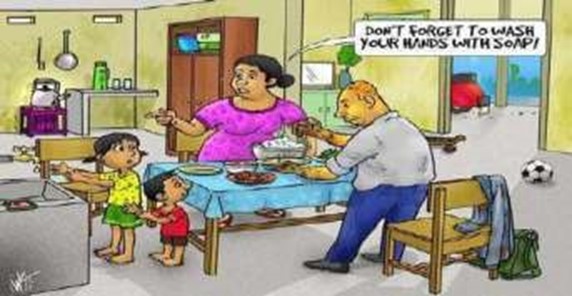
Facilitator’s Notes
-
Food handlers should have the requisite food handling valid medical certificates
-
Daily test the body temperature and record before being allowed to handle food
-
Observe strict respiratory hygiene (cover the mouth and nose with dustless tissue when coughing or sneeze into the elbowing; dispose of tissues and wash hands)
-
Wear Personal protective equipment (PPE), such as face masks, hair nets, gloves, clean overalls, and slip reduction work shoes or gum boots
-
Wearing of PPE should be routine in all institution facilities including the kitchen and dining areas
-
Physical distancing and stringent hygiene and sanitation measures should be observed while handling food
-
Reinforce personal hygiene measures and provide refresher training on food hygiene principles
-
Frequent hand washing for all cooks and kitchen staff is mandatory
-
Wash and sanitize any cookware, plates, cups and cutlery
-
Minimize food handling distribution during serving of food
-
Stagger meal times for learners/trainees to reduce crowding
-
Allowing time for cleaning and disinfecting between shifts
-
Food handlers should promote frequent and effective hand washing (with liquid soap and clean water for at least 20 seconds) and sanitizing at each stage of food handling.
4.6 TEMPERATURE TAKING
Activity 4
In groups of 3-5 members look at the picture and discuss considerations to make when a teacher is taking the learners temperature and recording.
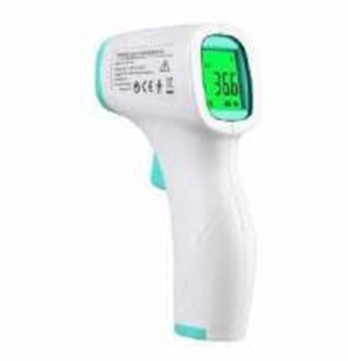
Facilitator’s Notes
-
Use a functional thermo-gun
-
Each thermo gun should be used by one person
-
Point at the forehead above the ear
-
Avoid touching the learner or body contact.
-
Learners, trainees, trainers, lecturers non- teaching staff temperatures shall be taken every day and records maintained
-
All authorized visitors to the institution must have their temperatures taken and recorded ●
Records will include full names, telephone numbers and place of residence.
-
Confidentiality will be maintained for the details provided. However, the institution may share the information with authorized interested parties for the purpose of contact tracing if need arises.
-
Any person with temperature reading 37.5 °C and above should be isolated.
-
Inform the County Rapid Response team and the parents/ guardians for further action
4.7 WASTE MANAGEMENT
Activity 5
In pairs, Brainstorm on how you can Practice proper collection, storage and transfer of waste in institution
Facilitator’s Notes
-
Avail pedal-operated, waste collection bins with liners at point of use within all the institution buildings
-
Waste burning shall be done in the absence of incinerators, with strict observation of safety measures taken,
-
Waste and tissue used for coughing/sneezing should be properly disposed off in bins located in learners/trainees and staff toilets, collected and eliminated safely on-site or transported in an adequate landfill.
4.8 CONCLUSION
What do you think is the role of a teacher in Hygiene, Nutrition and Sanitation?
Discuss the risks that an Administrator would face when implementing Hygiene, Nutrition and sanitation in a learning Institution.
4.9 REFLECTION
What have I learnt today?
SESSION FIVE: HEALTH SAFETY AND WELL BEING OF INSTITUTIONAL STAFF
5.0 INTRODUCTION
This session on health, safety and wellbeing will involve two main areas;
-
Mental health and psychosocial support
-
Strengthening guidance and counselling in institutions.
The ministry of Education will undertake a rapid assessment to determine the different levels of trauma to inform the design and provision of appropriate psycho-social support to teachers and learners to manage the impact of COVID-19 and deal with future crisis.
5.1 SESSION OBJECTIVES:
By the end of this session the participant will be able to;
-
Demonstrate an understanding of impact of COVID-19 on mental health and wellbeing
-
Develop risk assessment tools for COVID-19 trauma in learning institution
-
Develop support systems to ensure the psychological preparedness for institution reopening
-
Establish networks with the relevant stakeholders to prevent and manage COVID-19 in the learning institution
-
Develop and disseminate psychosocial support messages to learning institutions.
-
Appreciate the need to strengthen Guidance and Counselling in learning institution
5.2 SUGGESTED RESOURCES
Handout on hygiene protocols, Child friendly Schools Manual, Audio visual aids, Newspaper cuttings, List of messages, Fliers, Posters, Pictures, Flip Charts, Resource person and Digital devices among others in an inclusive setting.
5.3 METHODOLOGY
The following methods can be blended during the training;
Demonstration, Lecture, Discussion, Question and answer, Project, Inquiry based learning, practical activities; Experience sharing, Pair and share, Role play and Case study among others
5.4 HANDLING TRAUMA
Activity 1
In groups of 3-5 discuss different signs of trauma and how you can give psychosocial support to the learners, your fellow teachers and the support staff to come out of trauma and stress brought about by the COVID-19.
Facilitators Notes
Psychosocial support refers to compassion, care and protection that enhance the cognitive, physical, emotional, social and spiritual wellbeing of a person.
Effective psychosocial support should be age appropriate, gender sensitive and within cultural contexts. Psychosocial support should be aligned to the need, policies and guidelines requirements for learners and staff that are affected by Covid-19.
CAUSES OF TRAUMA
These include:
|
The COVID-19 has disrupted the traditional way of curriculum delivery that focuses on close interactions, grouping of learners and use of curriculum support materials.
ACTIVITY 2
In groups, discuss various ways that you can ensure the adequate coverage of the syllabus considering the split classes to comply with social distancing rule.
FACILITATORS NOTES
Knowledge on blended learning approaches
Coping with increased workload- the teachers should be made to understand and accept the increased workload for the time being.
Engage intern teachers
Encourage volunteer teachers
5.5 PSYCHOLOGICAL IMPACTS OF COVID-19
The current COVID-19 pandemic necessitated the closure of institutions; learners and over 330,000 teachers had to stay at home.
To curb further spread of the virus, public health protocols were introduced and they become part of the daily practice. These included hygiene protocols, quarantine, curfew and cessation of movement. This brought about isolation and containment. Curfews were later introduced and this heightened social interactions and movement.
Activity 3
In groups of two (adhering to social distance requirements) brainstorm on the psychological impacts of COVID-19
Such measures produced a wide range of psychological, emotional and physical effects, which includes: Stress, Depression, Feelings of confusion, Anger and frustrations , Loneliness, Fear of the unknown, Uncertainty about the future, Anxiety, Worry, Substance abuse, Child abuse , Family conflicts Incest, Stigma and discrimination, Isolation , Family disintegration, Post-traumatic stress disorder (PTSD), Loss of power and control , Lack of psychological space, Lack of social support
The Physical symptoms include:
Lack of sleep, Fatigue, Insomnia, Hypersomnia –too much sleep, Lack of or too much appetite Lack of concentration , Headache , Psychosomatic illness, Diarrhea
The economic impacts include:
Loss of income, Loss of opportunity, Loss of property, Loss of business opportunity, reduced pay cut
The above brings about overwhelming feelings which may lead to poor mental health, since the mind has been challenged and likely to experience pressure.
As a result of all this, there is a likelihood of increased cases of indiscipline, ill health, mental disturbance (stress and depression), Post-traumatic stress disorder acute stress disorder and poor academic and work performance, lethargy, low morale, work inefficiency both for the learners and staff.
Therefore there is a need for psychological therapy to avert these effects to adapt effectively in the new normal. Strengthening Guidance and Counselling in institutions of learning would be a prerequisite in the management of the impact of COVID -19.
5.6 COUNSELLING IN THE CONTEXT OF COVID 19
The negative impact of COVID -19 would require interventions to cope effectively. Offering counselling services would avert this effect.
Learners activity 4
Discuss in triads the benefits of counselling in the management of COVID- 19
Some of the benefits of counselling include:
Maintain emotional balance and mental health, Promotes wellbeing, Productive management of trauma, Creates self- awareness and acceptance, Relieves anxiety and fear, Coping with the new normal, Offers support and comfort, Adaption and management of change, Deal with challenges more effectively, Deal effectively with maladaptive behavior.
COVID -19 RISK ASSESSMENTS, PSYCHOLOGICAL DEBRIEFING AND TRAUMA COUNSELLING
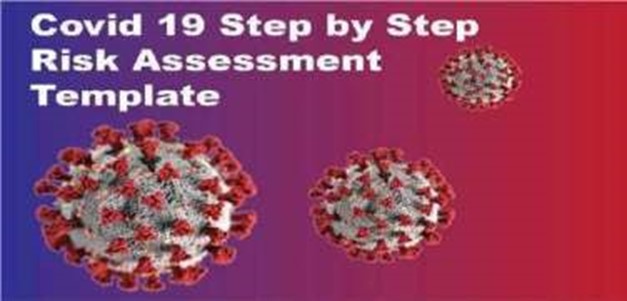
There is need to develop a risk assessment check list in the management of COVID -19. This may include a protocol on how to manage learners /staff or teachers who have been affected by C0ID 19.Employees who are 58 years and above may also be at risk.
The affected officers/learners shall not be stigmatized or discriminated due to their condition, but instead be supports as indicated above.
Learning activity 5
Discuss instances where COVID -19 caused trauma and stigma to the affected individuals
Individuals who have gone through trauma may exhibit the following signs and symptoms:
Intense feelings of distress, Extreme physical reactions like pounding of the heart, Invasive up setting memories, Hyper arousal, Anxiety
Psychological debriefing
If the individuals are not supported to deal with the impact of trauma they are likely to experience Post Traumatic Stress Disorder.
Hence the need for psycho social support in form of psychological first aid (PFA).It is an approach of assisting individuals in the immediate aftermath of a disaster/ pandemic.it reduces the distress caused by the traumatic experience for adaptive functioning and coping.
Benefits of psychological debriefing:
Help in coping with trauma, Acceptance of the situation, Burns off negative energy, Brings harmony between the thoughts, emotions and reactions , Helps to normalize individual reactions, Helps in calming the mind, Make meaning out of the situation , Get group support., Helpful in risk assessment
PFA is,
L-Look (pay attention to the situation)
L-Listen (pay attention to the person)
L-Link(take action to help)
5.7 PSYCHOLOGICAL WELLBEING
Learners activity 6
In triads enumerate 5 characteristics of a healthy person psychologically
Psychologically well – being refer to a positive mental state, such as happiness. It can also be referred to the subjective view of happiness which has an affective component and a cognitive component (satisfaction with life)
How to achieve psychological well-being:
Find meaning in life-meditation, yoga, praying, Connect with self – journaling, time alone personal therapy, Self- care- eating well, exercise, setting boundaries, Finding a support system, Connect with others , Being active , Learning a new skill
Characteristics of psychologically healthy individuals
In pairs share 5 qualities of a psychologically health individual
The following are characteristics of a psychologically healthy person:
Have self –awareness, Emotionally stable, Practice mindfulness, Have ability to manage feelings, Take risks , Low anxiety, Low vulnerability to stress, Warm , Have positive emotions, Are competent, Are productive , Ability to make adjustments, Have a sense of self-worth, Have a sense of responsibility, Have a sense of security
Benefits of psychologically healthy institutions of learning:
High work performance and results, Motivated individuals, Effective coping strategies, Good inter and intra personal relationships among others
5.8 CLASS MANAGEMENT
The teacher will be expected to assist the learners in maintaining health and safety measures in the classrooms /lecture halls.
Activity 7
In groups of 5 , discuss how you will ensure that the classes are well managed in order to control COVID-19 among the teachers/learners.
Facilitator Notes
-
![]() Regular handwashing by all the teachers/support staff and learners ✔
Regular handwashing by all the teachers/support staff and learners ✔
Maintaining physical distances at all times. -
Sharing of learning materials be discouraged at all times
-
Only individualized activities can be done during games and physical Education
5.9 CONCLUSION
-
COVID 19 has no vaccine or cure, researchers, medical doctors globally working together to get the cure.
-
COVID-19 is a respiratory disease and anybody can get the disease; no need to stigmatise those affected and infected.
-
offer support to all those infected and affected without discrimanation.
5.10 REFLECTION
To what extent can I manage psychosocial effects and trauma?
SESSION SIX: ALTERNATIVE MODE OF CURRICULUM DELIVERY
6.0 INTRODUCTION
 To prevent the spread of the disease in learning institutions, the Government of Kenya closed all learning institutions between 16th and 20th March, 2020. The premature closure of institutions disrupted learning programmes significantly. Individual institutions had to devise ways for children to continue accessing learning. These measures were giving assignments to be completed during the indefinite stay at home period. Others kept in touch with learners by availing learning content via various communication media.
To prevent the spread of the disease in learning institutions, the Government of Kenya closed all learning institutions between 16th and 20th March, 2020. The premature closure of institutions disrupted learning programmes significantly. Individual institutions had to devise ways for children to continue accessing learning. These measures were giving assignments to be completed during the indefinite stay at home period. Others kept in touch with learners by availing learning content via various communication media.
Given that COVID-19 is a contagious disease, face to face during curriculum delivery is critically hampered, Alternative Methods may remediate.
6.1 SESSION OBJECTIVE
By the end of the session the participants will be able to:
-
Explain various mode of alternative curriculum delivery
-
Explain technologies required to facilitates undisrupted learning
-
Demonstrate safe and secure use of technology ethically
-
Demonstrate use of technology in curriculum delivery
6.2 SUGGESTED RESOURCES
During the Session, you can use a combination of resources listed below. Your creativity and innovativeness will contribute to demystifying the concepts and hence make learning more real:
Handout on hygiene protocols, Safety module, Audio visual , Newspaper cuttings, List of messages, Quotes, Fliers, Posters, Pictures, Flip Charts, resource person, digital devices
6.3 METHODOLOGY
The following methods can be blended during the training;
Demonstration, Lecture, Discussion, Question and answer, Project, Inquiry based learning, practical activities
6.4 ALTERNATIVE MODES OF CURRICULUM DELIVERY
Activity 1:
Task 1:
In group of four discuss various alternative modes of curriculum delivery giving suggestions of how best they can be used to facilitate continued learning in kenya.
Task 2:
“We need to come together not only to address the immediate educational consequences of this unprecedented crisis, but to build up the longer-term resilience of education systems.”
Discuss how Kenya can build a long term resilient education system to facilitate undisrupted learning even beyond COVID 19 pandemic
Facilitators Note
-
Blended learning, which encompasses a wide variety of designs, including:
-
technology-enhanced learning, or technology used as classroom aids; a typical example would be the use of Powerpoint slides;
-
the use of a learning management system to support classroom teaching, for storing learning materials, set readings and perhaps online discussion;
-
the use of lecture capture for flipped classrooms;
-
one term on a residential-type class and two term online
-
a shortened time spent on class hands-on experience or training preceded or followed by a concentrated time spent studying online
-
-
Hybrid or flexible learning requires the redesign of teaching so that students can do the majority of their learning online, coming to the institution only for very specific face-to-face teaching, such as lab or hands-on practical work, that cannot be done satisfactorily online. Flexible learning is focused on developing, delivering, and evaluating learning experiences that promote effective and dramatic improvements in student achievement. Flexible learning enables pedagogical and logistical flexibility so that students have more choice in their learning opportunities, including when, where, and what they want to learn
-
Fully online learning with no classroom or in the institution of learning, which is one form of distance education, examples are:
-
courses for credit, which will usually cover the same content, skills and assessment as a campus-based version;
-
non-credit courses offered only online, such as courses for continuing professional education;
-
fully open courses, such as Massive Open Online Courses (MOOCs)
-
open educational resources (OER), available for free downloading online, which either instructors or students can access to support learning/training.
-
-
Mobile caravans: Mobile caravans fitted with devices, power and Wi-Fi are used to reach different institutions to ensure unlimited quality learning experiences including where there is no internet connectivity.
-
institution Clustering program: This is clustering of institutions in terms of proximity and socio-economic backgrounds. It aims to create an environment in which best practices and resources are shared across the board. Lessons are recorded and presented virtually to the cluster. This is both for real time and offline. The programme aims at enhancing flexible learning by encouraging institutions to share their infrastructure and skills.
6.5 TECHNOLOGIES AND APPLICATION
Activity 2;
To facilitate learning, various applications and technologies are used during covid 19 pandemic. Explain at least five technologies used in curriculum delivery
6.6. ONLINE SAFETY, SECURITY AND ETHICS
Activity 3:
In groups discuss the following
i. Online security ii. Online safety and protection iii Online ethics
a.
Discuss how one can prevent online risk and threats
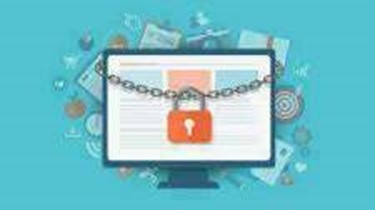
Facilitators note
Tips on How to prevent online risks and threats from Infecting Your Computer
-
Keep Your Anti-Virus Software Up to Date
-
Run Regularly Scheduled Scans with Your Anti-Virus Software
-
Install Anti-Virus/Malware Software
-
Keep Your Operating System Current ●
Think Before You Click -
Keep Your Personal Information Safe ●
Don’t Use Open Wi-Fi ●
Backup Your Files. -
Use Multiple Strong Passwords
-
Secure Your Network
-
Discuss the attached image
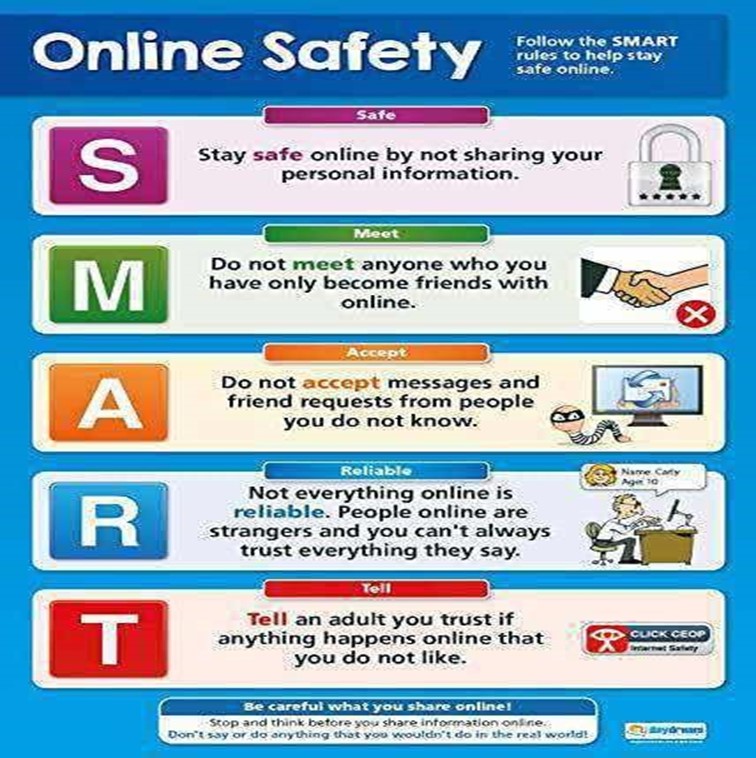
Source: shorturl.at/tAEGU
-
Information was sent to Amani by his classmate who had a file that contained a very dangerous virus. Knowingly, he sent an email to his friend. The virus damaged all Amani’ computer software including the file which contained his marks for the final assignment. His friend’s name could not be included to the graduation list. Was it right for Amani friend’s to send the file? What should he have done?
Answer: It was not right for Amani’ friend to send the file. He should have informed the teacher about the virus
Ethical Use of Computers and other Online Communication Tools
-
You are not allowed to use computers to harm others.
-
It is unethical to use computers to steal other people’s information.
-
Never access private information without the owner’s authority.
-
Avoid copying, sharing or using copyrighted software without the author’s permission.
-
Maintain and protect your privacy and that of others while online.
-
You are not allowed to use another user’s computer resources without permission.
-
Report any illegal use of the internet immediately to the local law enforcement office and also to the internet providers.
-
Safeguard your user ID. Never share your user ID and password or write it anywhere on a piece of paper.
-
It is unethical and downright illegal to use a computer or a program to intentionally retrieve and modify other user’s information
6.7 USE OF TECHNOLOGY IN CURRICULUM DELIVERY
Activity 4
Discuss ICT application that can enhance collaboration and communication during COVID 19 pandemic. Select one audio and video based application and demonstrate how it can be used to delivery learning.
Facilitator’s notes
Tools for resources producing: Presentation recording software, Screen capture software, the software of video production, The software of original video producing, The software of Multimedia learning resource producing
Tools for collaboration: emails, social media, All types of live streaming software, including software on interactive teaching, remote office, online-course, blogs
Web-based training.
This method puts computer-based Learning modules onto the Web. There are many courses available on the Internet in many different topic areas. Web-based training programs are also often linked with software (a learning management system, or LMS) that makes learners’ progress trackable, which makes recordkeeping very easy for the training administrator.
Tele- or video conferencing.
These methods allow the trainer to be in one location and trainees to be scattered in several locations. Participants are networked into the central location and can usually ask questions of the trainer via the telephone or by a webchat feature. Lectures and demonstrations can be effective using this method.
Audio conferencing.
This method is similar to videoconferencing but involves audio only. Participants dial in at the scheduled meeting time and hear speakers present their learning. Question and answer sessions are frequently held at the end of sessions in which participants can email questions or call in and talk to a presenter.
Web meetings, or webinars.
This method contains audio and visual components. partcipants dial in to receive live audio training and also follow visual material that appears on their computer screens. These presentations are similar to CD-ROM or PowerPoint presentations and sometimes offer minimal online interactivity. Q & A sessions may also be held at the end of sessions.
Collaborative document preparation.
This method requires participants to be linked on the same network. It can be used teach writing reports and technical documents.
E-mail.
You can use e-mail to promote or enhance learning. Communicate to learners and conduct evaluations through e-mail forms.
6.8 CONCLUSION
General guidelines on ensuring online learning are administered ethically in safe and secure platforms.
-
Enforce an effective parental consent mechanisms that allow content to be accessed by both the learner and the parents
-
Ensure the content used by the learners is approved by relevant government agencies
-
Ensure appropriate measures are in place to protect the learners against online threats. These will include; firewalls, content filtering, antivirus and malware checking.
-
Ensure authentication and authorization for the users are set appropriately. This allows learners to access facilities they require while minimizing the potential for deliberate or accidental misuse of the Internet.
-
Enforce an effective parental consent mechanisms that allow content to be accessed by both the learner and the parents
-
Ensure that all users understand their e-security obligations and responsibilities through appropriate education on online safety, security and ethics
-
Teachers, parents and service providers to establish and maintain proper processes to log on, report on and monitor any e-security incidents. These will help ensure that; any damage is minimized, services return to normal as soon as possible and that lessons can be learned to prevent similar incidents from reoccurring in future.
-
Teachers and parents ensure mechanisms are in place to detect and prevent malware to guarantee confidentiality, integrity and availability of Resources and Services Online.
-
Teachers and parents establish and maintain effective internet monitoring; this ensures attacks and other e-security incidents are detected quickly, allowing a rapid and effective response to them.
-
Ensure the institutions offering online learning privately have an Acceptable Use Policy Agreement that outlines roles and responsibilities of the teachers, parents and learners.
6.9 REFLECTION
-
Am I able to identify appropriate alternative mode of curriculum delivery for institution?
-
Am able to advice my learners on online safety, security and ethics?
-
Which additional knowledge do I need to effectively implement flexible learning in my institutions?
ROLES OF DIFFERENT STAFF IN LEARNING INSTITUTION
Heads of Institution Roles:
-
Sensitize both teaching and support staff on Guidelines for re-opening institutions of learning during the pandemic and beyond
-
Designate specific roles to both teaching and support staff with comprehensive training.
-
Source for adequate supply of clean and safe water.
-
Create and maintain serviceable numerous strategic water points
-
Procure thermo gun for checking temperature for learners, teachers and support staff.
-
Network with other institutions of learning in the neighborhood.
-
Facilitate collation of data concerning COVID_ 19. viii. Guide all teachers to integrate COVID_19 into every learning areas. ix. Procurement of sanitation and hygiene materials and requirements.
-
Ensure proper waste collection transfer and management
-
Train parents and BOM. xii. Ensure good handlers are checked; have medical certificates.
- Upgrade infrastructure and furniture to support implementation of safety and hygiene protocol.
- Facilitate Provision of adequate PPE for learners , teachers and the support staff. xv. Ensure prudent use of resources. xvi. Restrict entry into school. xvii. Identify the nearest health facility and ambulance providers
xviii. Liase with county COVID_19 response team in case of emergency. xix. Facilitate for provision of psycho social support to manage trauma and stigma. xx. Maintain a welcoming, respectful, inclusive learning environment. xxi. Ensure smooth re-entry to school for all learners including gender based violence.
Teachers Roles
-
Adhere to the health and safety guidelines always.
-
Sensitize learners on how to maintain social distancing.
-
Ensure learners are adhering to the health and safety protocols always and everywhere. eg classroom, laboratory, fields or dining room among others.
-
Ensure learners are adhering to the hygiene and sanitation protocols of washing hands, wearing masks, and staying in clean environment.
-
Be able to pass correct information on COVID-19 to the school community,
-
Be an ambassador on how to contain COVID-19
-
Monitor learner Temperature, record and hand over to the head of institution daily
-
Identify learner who develops any symptoms of illness consistent with COVID-19 symptoms; fever of 37.5 °C, for isolation.
-
Inform the head of institution of learners isolated with COVID-19 symptoms; fever of
37.5 °C,
-
Liaise with the Institutional nurse/matron to administer first aid and keep a clear record of the nature of first aid and the time administered.
-
Know the established communication structure to use it when need arises. xii. Empower parents and communities to support homeschooling of learners
-
Provide Psychosocial Support and Wellbeing of Learners/Trainees
-
Provide guidance and counseling in learning institutions
-
Engage parents and guardians in supporting learning, assessment and reporting on how learning is taking place at home,
-
Keep a record of referral mechanisms to protect learners/trainees from violence and sexual abuse in place and intact, including during institution closure
-
Read understand and practice protocols and procedures that will his/ her as the teacher and learners/trainee safety. xviii. Ensure delivery of the curriculum including blended learning approaches. xix. Be conversant with alternative learning approaches. xx. Observe and practice Safety measures for Learners with disabilities
xxi. Manage all learner activities in and outside classroom by observing all protocols and procedures on prevention and spread of COVID19.
School Bursars/Accountants and Secretaries Roles
- Put measures in place for hygiene control and social distancing in place of work prior to receiving and or serving clients including learners;
-
Make logistical arrangements for the orientation sessions of other non-teaching staffs and themselves. iii. Engage in the orientation of all staff, school governing body members and food handlers at the school. iv. Provide the necessary support to staff members and learners who show signs of illness or are on sick leave.
-
Safeguard the health, safety and wellbeing of learners, teachers and other support staff by observing MoE guidelines and MoH protocols on COVID19.
-
Monitor non-teaching staff attendance.
-
Ensure that the necessary personal protective equipment items (e.g. face masks) are issued to non-teaching staff.
-
Food handlers Roles
-
Ensure you have requisite food handling certificates,
-
Be screened for COVID- 19 symptoms before handling food,
-
Observe strict respiratory hygiene (cover mouth and nose when coughing or sneezing; dispose of tissues and wash hands),
-
Use personal protective equipment (PPE), such as face masks, hair nets, gloves, clean overalls, and slip reduction work shoes or gumboots while handling food,
-
Always keep physical distance,
-
Observe stringent hygiene and sanitation measures while handling food,
-
Frequently and effectively wash hands (with liquid soap and water for at least 20 seconds) and sanitizing at each stage of food handling,
-
Always avoid facing one another at workstations should be spaced out,
-
Avoid close contact with anyone showing symptoms of respiratory illness such as coughing and sneezing,
-
Ensure learners/trainees wash their hands thoroughly with clean water and liquid soap before and after eating,
-
Space tables and chairs at a distance of at least 1 meter apart,
-
Prepare food in good time so that staggered eating shifts by classes/ cohorts is possible where population is high to avoid crowding in the dining hall. Where possible, lunches and afternoon snacks should take place within each class,
-
Ensure that there is no sharing of food and utensils,
-
Keep utensils and cutlery clean before and after use by learners/trainees and staff,
-
Use cloth, liquid soap and water for cleaning/ disinfecting kitchen surfaces,
-
Store each learners/trainee’s food container and utensil separately if possible, so that each learner/trainee uses the same items daily,
-
Disinfect food stores surfaces by cleaning daily and
-
Open windows to allow aeration at all times where possible.
Nurses Roles
i. They should ensure that the school sanatoriums/clinics are well equipped with emergency medical supplies to assist learners/trainees and staff in the event of covid19 outbreaks. ii. They should ensure that they observe social distancing of at least 1 meter while the sick bay.
-
They should ensure that that conduct preliminary temperature checks on the learners and the trainees visiting the facilities.
-
They should provide hand washing facilities for learners/trainees before accessing facilities.
-
Provide proper waste disposal facilities and dispose water frequently.
-
They should clean and disinfect equipment and items after use
-
Disinfect and keep clean surfaces, rails, furniture, knobs and other places three times a day.
-
They should ensure adequate lighting and ventilation
-
They should maintain proper records of patients.
-
The institution medical personnel to be trained on how to handle the patients with COVID-19 virus.
School Matrons Roles
i. Ensure food handlers have and cleaners have personal protective equipment(Gloves,
Aprons, Facemasks) ii. Ensure learners/trainees wash their hands thoroughly before and after eating.
-
Organize tables and chairs, be spaced at a distance of at least 1 meter apart in the dining hall
-
Make sure that utensils and cutlery be kept clean before use by cooks and earners/trainees.
-
Guarantee there is clean cloth, liquid soap and water is made available for cleaning/disinfecting kitchen and boarding surfaces.
-
Certify that Food stores are kept clean by disinfecting surfaces daily. vii. Ensure that all windows are opened at all times to allow aeration
Security Guards Roles
-
Take the details of any visitor and record them
-
Take the temperatures of any visitor including other staff members and record them. iii. Ensure that no learner leaves the school without being escorted.
-
Ensure that there is social distancing among the workers and the visitors being welcomed to the school.
-
Direct those coming to the school to make use of the learning water at the gate.
-
Ensuring that everyone entering the school have worn a face mask . vii. Ensure that the gate is always secured and no unauthorized persons come to school.
-
Grounds Men/Cleaners
-
Cleaning all the commonly used areas; classrooms for 2 times a day and 3 times for the
toilets
-
Disinfecting the school grounds regularly. iii. Ensuring that there is following water in all the watering points iv. Ensure that the pedal operated waste collection bins are functional and are emptied frequently.
v. Clean around the dormitories to make them free from rodents, insects and other vermin.
Driver and Assistants roles
-
Ensure Learners/trainee maintain at least 1 m distance from others while waiting to board vehicles; the ground should be clearly marked.
-
Ensure learners/trainees wear facemasks and sit at least 1 meter distance from each other in accordance with Public Health guidelines while on board a bus.
-
Ensure Learners/trainees buckle up the safety belts at all times of travel, iv. Maintain Records of learners/trainees using institutional transport
-
Provide hand washing facilities at transport hubs with liquid soap and water (e.g. bucket with tap/tippy tap) and/or an alcohol-based hand rub.
-
Clean and disinfect frequently touched surfaces between each journey using detergent
-
Use posters and announcements to remind travelers and staff to wash their hands often, follow general hygiene advice and not travel or work if they are unwell.
-
Ensure as much as possible, windows remain open and the bus surfaces and equipment is cleaned and disinfected daily.
-
FACILITATORS’ GUIDING NOTES
The following are critical areas the facilitators should consider for effective use of the training module.
(a) Participants
Ideally, a training workshop should have between 20 and 25 participants. However, for cost effectiveness, the number of participants may go up to 50. The training of more than 50 participants may impede effective participation and interaction. Within the context of COVID-19, face to face workshops may be challenging and where used the number should not exceed 50. The facilitator should therefore plan instructional content that may be delivered using alternative channels of communication.
(b) Venue
The venue should be large enough for you to carry out small group activities. If possible, have more than one room so that groups can work with ease. The room should be well light and ventilated. It should also have adequate and comfortable furniture.
(c) Preparation
Facilitators need to familiarize themselves with the content and subject matter of the training before the actual training commences. This will entail studying the Training Module, the Kenya Basic Education Response Plan, Guidelines and Protocols for Institutions of Basic Education and other relevant materials.
(d) Implementation
To be an effective facilitator, one need to:
-
be knowledgeable on the subject matter to enable you process and incorporate inputs from the participants effectively
-
allow for the input of participants in deciding on the elements of the training
-
ensure that the training sessions are well planned, but at the same time allow flexibility in responding to the unique needs of your participants
-
Summarize and clarify the key points of the sessions to help the participants focus on learning outcomes.
(e) Methodology
For effective implementation of the training, there is need to use a variety of methods.
Lectures- should be used in instances when the facilitator needs to give instructions or to pass on information
Case studies- should be used when real life examples are presented to small groups for analysis and discussion
Small group activities- should be used to facilitate in-depth discussion of concepts and to share experiences
Role-plays and simulations – should be used allow the learners to explore hypothetical situations
Discussions – should be used to allow expression of varied views
Question and answer.
Brainstorming – should be used when the substantive information about a session is required in a short time and all participants should contribute to the brainstorming.
Training Minimum Requirements
For effective delivery of training within the context of COVID-19, all facilitators must ensure that all trainings are conducted under the following conditions:
-
All participants must maintain a social distance of at least 1 meter from one another while in the training venue and other shared areas
-
Facilitators must avoid direct physical contact with participants
-
Group activities should not exceed 3 members
-
There should be provision of adequate clean running water for drinking and washing hands
-
There should be adequate provision of liquid soap / sanitizers
-
All facilitators and participants must wear face masks/ face shield while in the training venue and in public space
-
Facilitators and participants must be screened for symptoms of COVID-19 at the entrance.
Click Here to Download this Document in PDF: Training Module for Staff of learning institutions on COVID-19 guidelines and Health Protocols

Read Also:
- TSC Issues Training Module for Staff on COVID-19 Guidelines and Health Protocols
- Full TSC Guidelines For Recruitment Of Teachers Post Primary Institutions – 2020/2021
- Government Advertises 1,000 ICT Internship Vacancies for Teachers
- West Pokot County Merit List of 2020 TSC Job Applicants
- Nairobi County 2020 TSC Recruitment Interview Dates and Venues
- Bomet County Merit List of 2020 TSC Job Applicants
- Samburu County Merit List of 2020 TSC Job Applicants
- Kakamega County Merit List of 2020 TSC Job Applicants
- Kisii County Merit List of 2020 TSC Job Applicants
- Uasin Gishu County Merit List of 2020 TSC Job Applicants
- Tana River County Merit List of 2020 TSC Job Applicants
- Nyandarua County Merit List of 2020 TSC Job Applicants
- Nandi County Merit List of 2020 TSC Job Applicants
- Siaya County Merit List of 2020 TSC Job Applicants
- Kitui County Merit List of 2020 TSC Job Applicants
- Makueni County Merit List of 2020 TSC Job Applicants
- Vihiga County Merit List of 2020 TSC Job Applicants
- Kiambu County Merit List of 2020 TSC Job Applicants
- Kirinyaga County Merit List of 2020 TSC Job Applicants
- Turkana County Merit List of 2020 TSC Job Applicants
- Kilifi County Merit List of 2020 TSC Job Applicants
- Migori County Merit List of 2020 TSC Job Applicants
- TSC Interview Questions and Answers
- How to Check Your 2020 TSC Recruitment Online Application Status
- Interview Tips for Job Seekers
- TSC Job Group Promotion Interview Questions and Answers
- September 2020 TSC Vacancies and Replacements for Primary and Secondary School Teachers.
- Kakamega County 2020 TSC Recruitment Interview Dates and Venues
- Bomet County 2020 TSC Recruitment Interview Dates and Venues
- Narok County 2020 TSC Recruitment Interview Dates and Venues
- Interview Tips for Job Seekers
- How to Apply for the September 2020 TSC Teaching Job Vacancies
- RiftValley Region TSC List Of New Recruitment Vacancies
- Central Region TSC List Of New Recruitment Vacancies
- Nyanza Region TSC List Of New Recruitment Vacancies (New Additional Teachers)
- North Eastern Region TSC List Of New Recruitment Vacancies
- Eastern Region TSC List Of New Recruitment Vacancies (New Additional Teachers)
- Coast Region TSC List Of New Recruitment Vacancies
- Nairobi County TSC List Of New Recruitment Vacancies
- Western Region Tsc List Of New Recruitment Vacancies
- September 2020 TSC Vacancies and Replacements for Primary and Secondary School Teachers
- How to Track COVID-19 Outbreaks in Local Schools
- HRMIS Procedure on How to Apply for the Advertised TSC Teaching Vacancies and Promotions September 2020
- List Of Schools With TSC Replacement Vacancies for Secondary School Teachers September 2020
- Schools May Reopen before January 2021, says CS Magoha
- List Of Schools With TSC Replacement Vacancies for Secondary School Teachers September 2020
- Nyanza Region TSC List Of New Recruitment Vacancies (New Additional Teachers)
- Central Region TSC List Of New Recruitment Vacancies (New Additional Teachers)
Download Free School Resources Using the Links Below:
Grade 1, 2, and 3 (Combined) Evaluation Assessment Tests Set
2020 Primary School Class 5, 6, and 7 Exams
2020 Primary School Class 8 Exams
Term 1 Holiday Assignments Class 4 – 8
HIGH SCHOOL RESOURCES
UPPER PRIMARY SCHOOL RESOURCES
PRE-PRIMARY (PP1-PP2) SCHOOL MATERIALS
GRADE 1- 4 MATERIALS
UNIVERSITY RESOURCES
COLLEGE RESOURCES


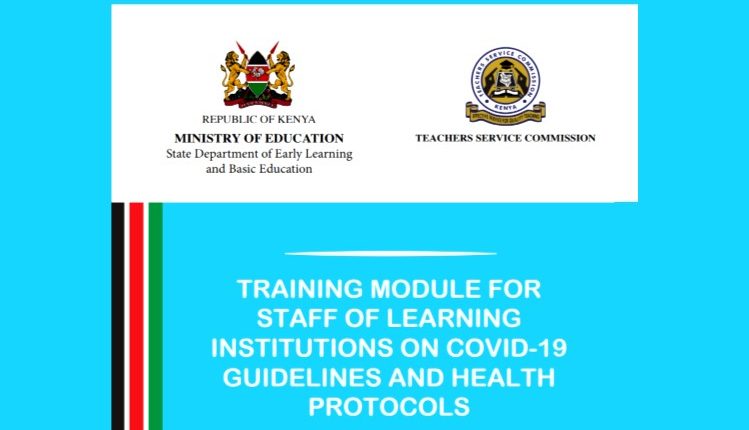
 After touching or cleaning surfaces that may be contaminated; and
After touching or cleaning surfaces that may be contaminated; and  Regular handwashing by all the teachers/support staff and learners
Regular handwashing by all the teachers/support staff and learners
Comments are closed.